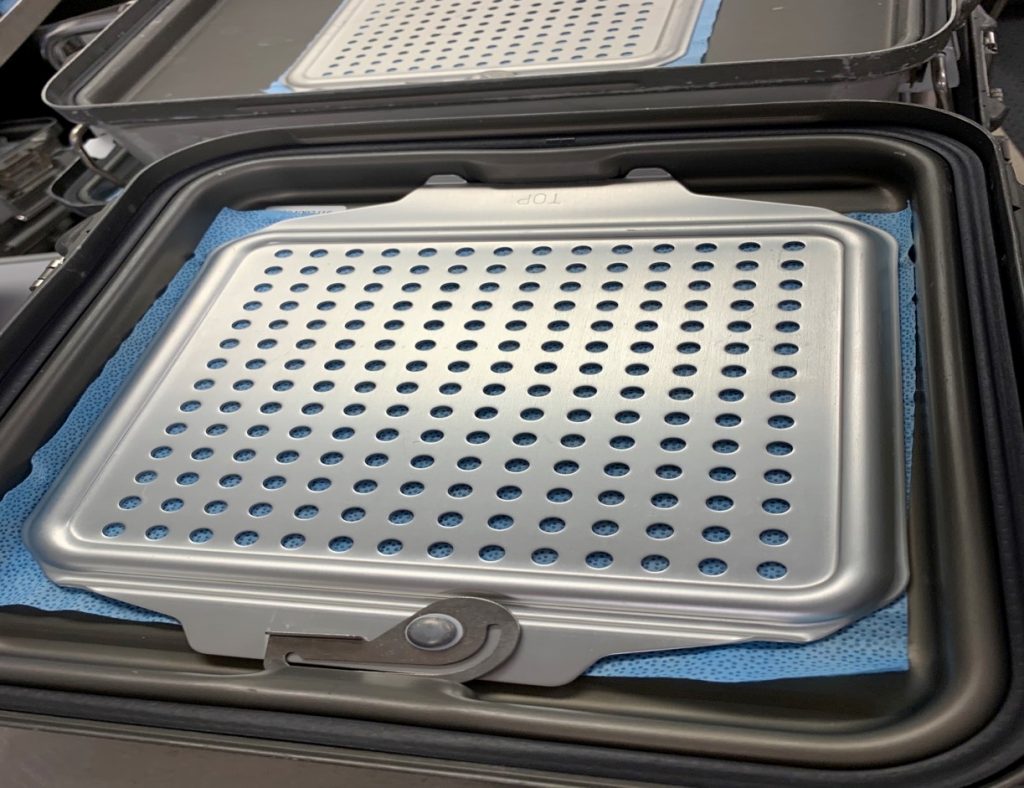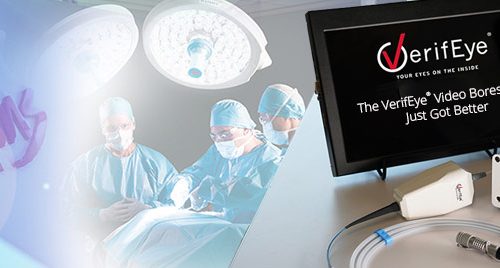Checking the Integrity of Blue Filters
It is vitally important for all staff using instrument container systems to understand the rationale behind checking the integrity of blue filters.
As a consultant I have visited hundreds of sterile processing departments (SPD) throughout the country. I often come across poor practices, misuse of equipment, and a general lack of education and understanding as it relates to sterile reprocessing and equipment use. One poor practice that ORs and SPDs have in common is the lack of proper training and misuse of disposable (one-time use) filters in instrument containers. While not an uncommon problem, it could have very serious consequences for patients and the facility. Checking the integrity of blue filters is necessary for both OR and SPD staff.
While performing OR/SPD assessments, I often see dirty instrument containers from the OR being delivered to the decontamination area with blue filters still locked inside the instrument container. This is a red flag since these one-time use filters should never make it to the decontamination area. However, when it does occur, the filters are usually discarded in the decontamination area by the sterile processing tech and nothing further is said.

Let’s dig down to the root of this problem. These one-time use filters are placed into the clean instrument container in the assembly area during reprocessing. Filters must be in the proper position during sterilization. The sterile processing technician should ensure that:
- Only filter materials that have been tested and documented to be efficacious in the specific container system should be used. Before use, filters should be inspected for visible holes and matched to the correct instrument container.
- Only one new filter per container is used unless directed otherwise by the instrument container manufacturer.
- The filter should fully cover the perforated area of the instrument container.
- No part of the filter should ever be folded.
- The retention plate must be properly locked in position, holding the filter in place.
- The perforated areas on the outside of the container should not be covered in order to allow air movement during the sterilization process.
Once in the OR, the circulator and scrub tech should check the indicators on the container system and open/deliver the instruments aseptically to the sterile field. To do this, the following recommendation regarding the manner to remove instruments from containers and deliver to the sterile field has been made.
According to ANSI/AAMI, Section 8.12.2 (Removing items from sterile packaging and transferring them to the sterile field):
“The following guidelines should be observed when removing the contents from a sterile package and transferring the contents to the sterile field:
- 1) Before removing the sterile contents, the surgically attired scrub person should check the internal CI for the appropriate endpoint response.
- 2) Avoiding all contact with the table or external surfaces of the packaging, the scrub person should remove the contents of the package. If the packaging is a rigid sterilization container system, the scrub person should grasp the inner basket handles with both hands and lift the basket well above the container bottom, avoiding all contact with the upper rim of the container. For wrapped items and items in envelopes, the scrub person should avoid all contact with the packaging. NOTE—If multiple instrument baskets are stacked inside a container system, they should be removed individually to the sterile field.
- 3) Before the package contents are placed on the sterile field, the bottom of the wrapper or container system should be inspected visually for integrity and moisture.
- 4) The contents of the sterile packaging should be aseptically transported to the sterile field.
- 5) For container systems, the circulator should inspect the integrity and proper alignment of the plate and filter or valve in accordance with the manufacturer’s written instructions.
Rationale: Basic aseptic techniques and principles of sterilization are the same for all sterile packaging systems. See also AORN (2010d).” You can read more on this guildeline on page 98 of this article.
As one can see, in bullet 5 of the AAMI recommendation, “For container systems, the circulator should inspect the integrity and proper alignment of the plate and filter or valve in accordance with the manufacturer’s written instructions.” This combined with the manufacturer’s recommendations is a needed check to ensure proper reprocessing. Both Genesis and Aesculap state that the contents of their container’s should not be considered sterile if any of the following conditions are present:
- A filter is missing from any of the perforated areas
- A retention plate is dislodged or not fully engaged
- A filter does not cover the raised edges (filter ridge) surrounding the perforated areas on the lid or bottom
- A filter is wet
- A filter is damaged, torn, ripped, punctured, or creased (Not folded over onto itself)
- More than one filter is used for processing or the filter material has been folded forming more than one layer over the perforations
- The filter has already been used before
If all filters are intact, can we be sure it is sterile? Well, no. There is no nationally recognized test for the microbial barrier performance of the disposable filters. As with any instrument container or sterile delivery system, inspection for integrity is part of a good quality assurance program. The OR and SPD staff cannot determine if it is 100% sterile but can deduce if a tray has been reprocessed correctly by checking the integrity of blue filters.
That is why properly using the AAMI/AORN guidelines and manufacturer’s recommendations is so important. It makes checking the blue filters a necessity to ensure the instruments are properly sterilized for your patients. During my consulting visits, I recommend the following approach:
- All blue filters MUST be checked and discarded in the OR.
- If a filter arrives in place in the decontamination area, then it was not checked properly in the OR.
- If the filter was not checked by the OR staff then a patient was potentially exposed to non-sterilized instruments and a surgeon is not aware of it.
- All trays arriving in the decontamination area with disposable (blue) filters intact should be followed up on with written documentation, surgeon notification and staff education/corrective action (if necessary).
Patient safety is always paramount. Checking that instruments have been properly reprocessed only helps to ensure the safety of our patients. In doing this staff education and training is always helpful and may sometimes be necessary. In this case, it is vitally important for all staff (OR and SPD) using instrument container systems to understand the rationale behind why we check these items. Ensuring proper reprocessing is one step in providing the highest quality of patient care possible.
Catch up on the latest PROCESS PROs here.
Is your department checking the integrity of blue filters? How about following other necessary best-practices? Decide to become Survey Ready with a STERIS Clinical Assessment of your sterile processing department. Don’t wait for TJC or DNV to ping you on something you can fix today! Email us at SPDSurveyReady@steris.com.



